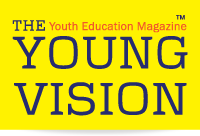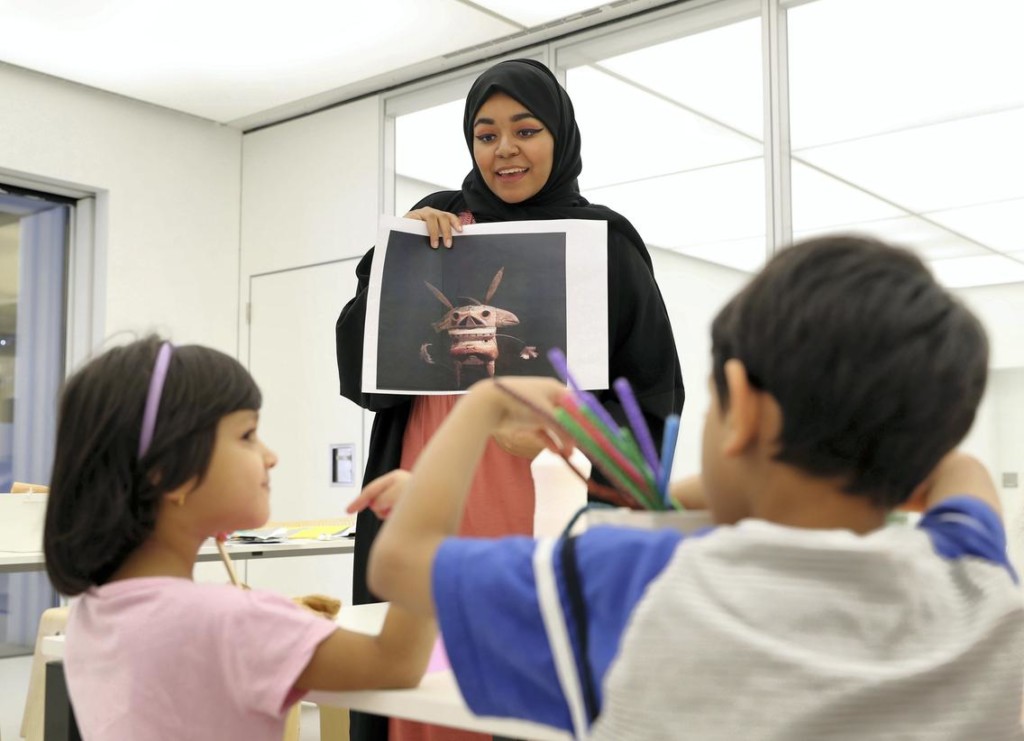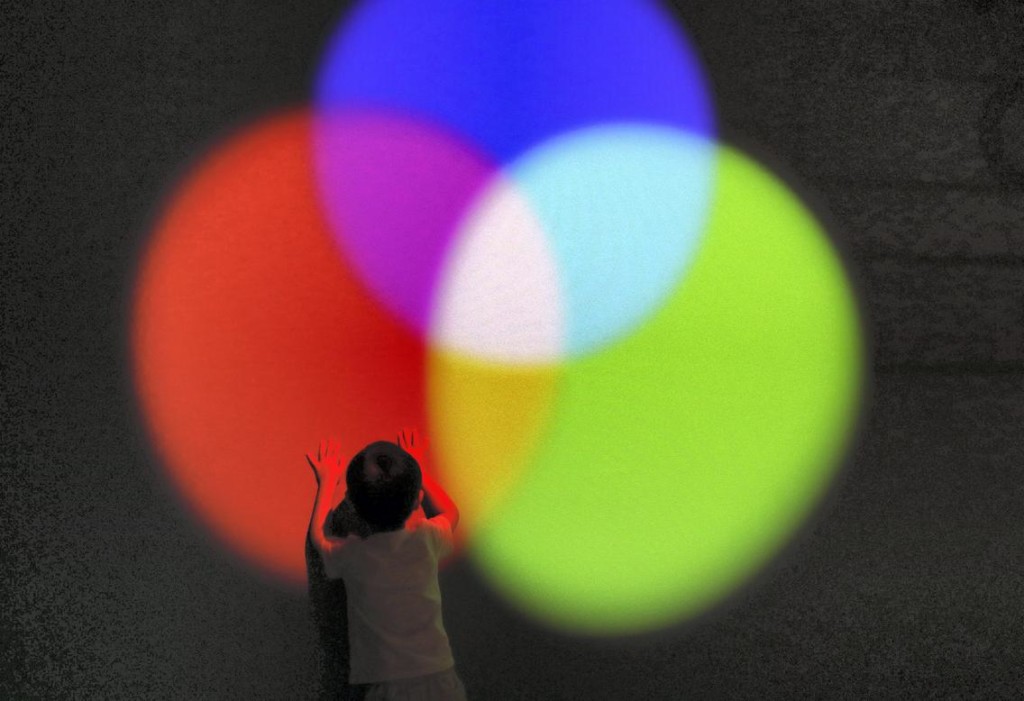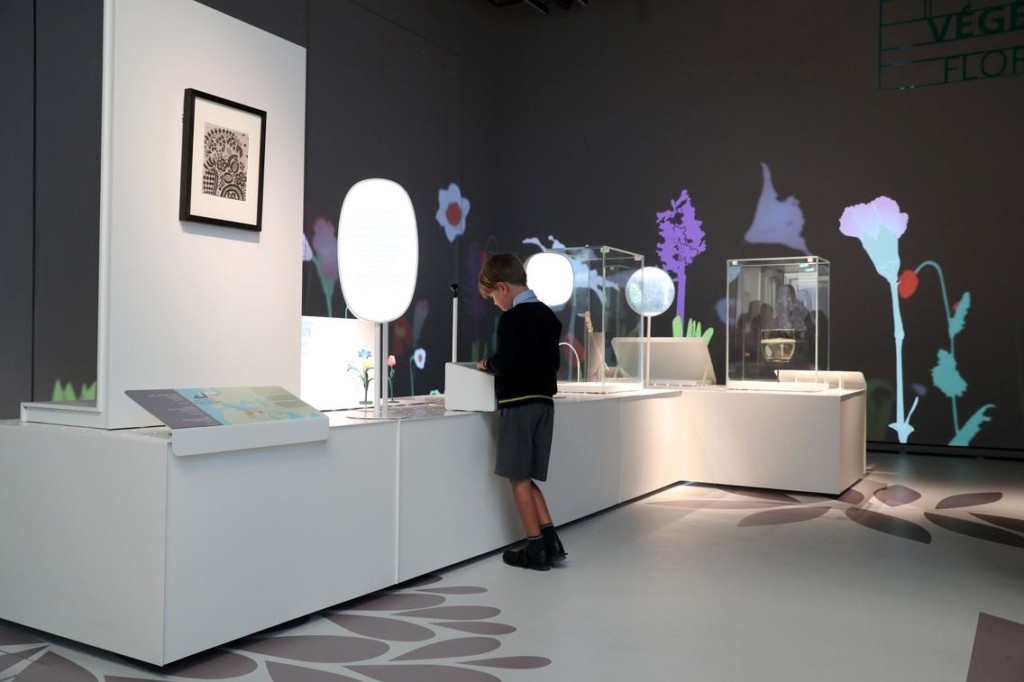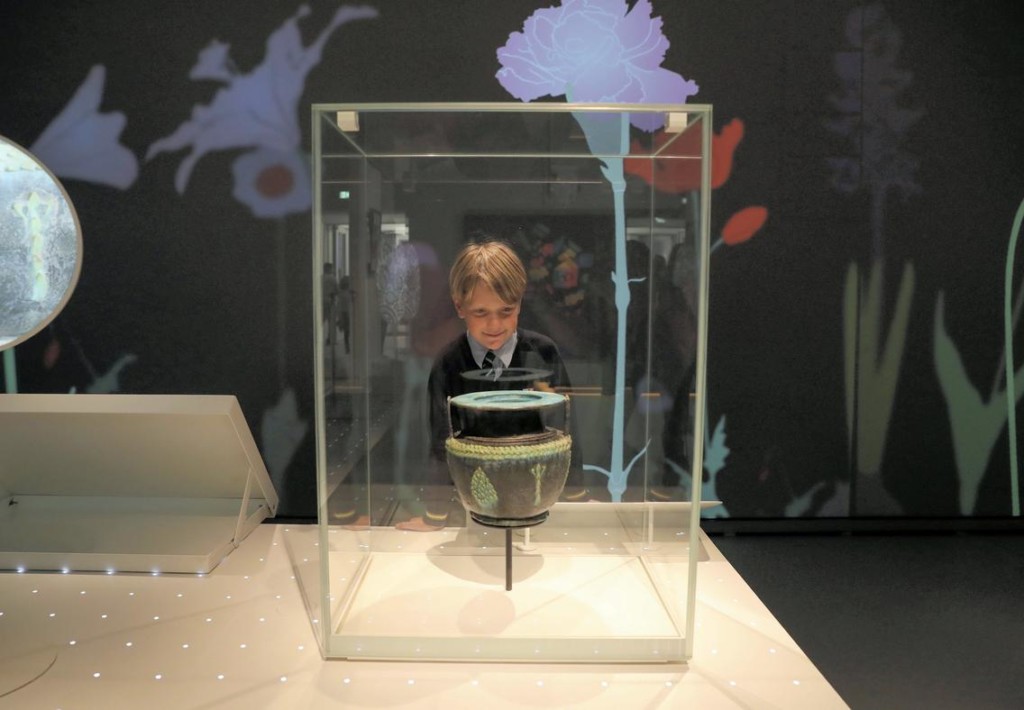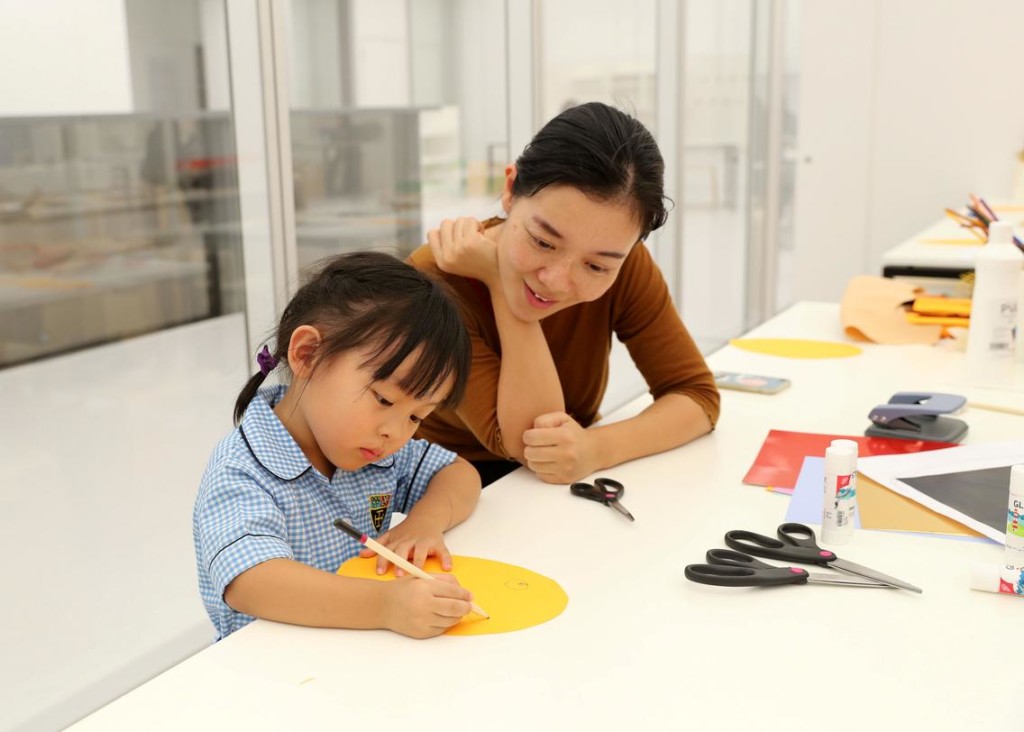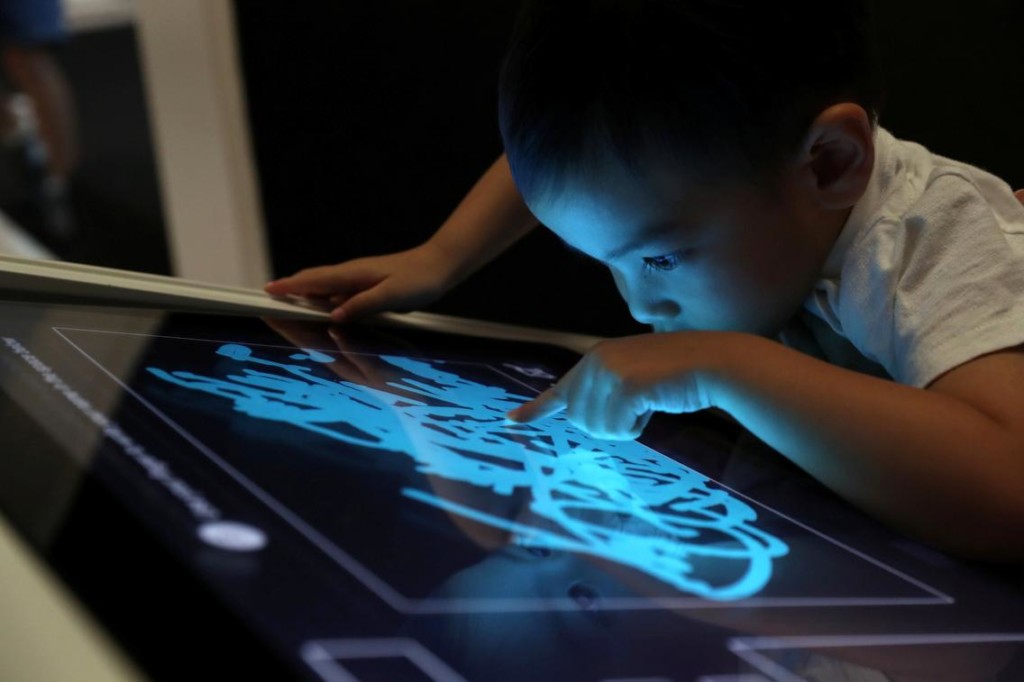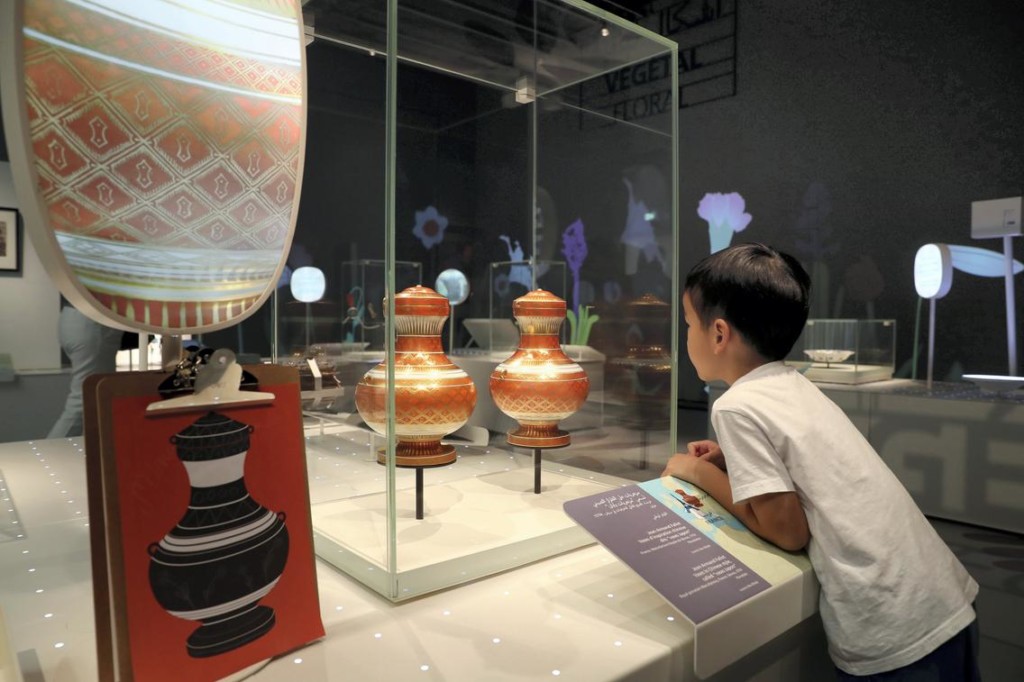
‘A place of discovery’: Children’s Museum at Louvre Abu Dhabi welcomes pupils
Louvre Abu Dhabi’s Children’s Museum features 10 pieces of original art.
Two phrases that visitors to Louvre Abu Dhabi Children’s Museum certainly will not hear are “don’t touch” and “sit still.”
Rather, the inaugural children’s exhibition titled Travelling Shapes and Colours features original works accompanied by interactive displays designed to encourage young visitors to get busy exploring with their hands and feet as they learn about the art pieces around them.
“Our Children’s Museum is really special,” Louvre Abu Dhabi director Manuel Rabaté told 200 teachers and principals invited to learn about the museum’s educational offerings on Sunday. “It’s something very, very new for the region, but also for the world.”
Unlike other children’s museums that present replicas, Louvre Abu Dhabi’s Children’s Museum features 10 pieces of original art, ranging from a stone vase dating from 1,000 to 500 BCE on loan from the Al Ain National Museum to Paul Klee’s 1938 oil painting Oriental Bliss.
Each piece of art in the Children’s Museum is encased in protective glass displayed at the child’s eye-level.
“This Children’s Museum will expose artwork in their beauty, in their authenticity,” said Mr Rabaté. “The Children’s Museum is really an act of trust in your community and also in the families and children in order that they can understand the reality of the object.”
The artwork is accompanied by visual prompts – such as a map showing the cultures around the world that influenced a particular piece – or an interactive display related to the exhibit. Some activities are old-school, requiring pupils to use a pencil to colour in a picture of a vase, for example. A large black magnetic wall invites children to rearrange brightly-coloured magnets of various shapes and sizes.
The Children’s Museum also features a tent where pupils can enter, take a seat around an indoor campfire, look up at twinkling lights and share stories.
The museum’s main gallery also features 14 tactile learning stations accompanying selected works to facilitate learning in Braille, Arabic, English and French, said Catherine Monlouis-Félicité, education and cultural engagement director for Louvre Abu Dhabi.
“A big focus has been made on the content, especially for families, children and schools to make the artistic process understandable for everybody,” said Ms Monlouis-Félicité.
Schools may pre-book one of three guided tours currently available. Each tour, lasting about 60 minutes, is tailored for different age groups.
The “My First Visit to Louvre Abu Dhabi” introduces pupils from Grades 3 to 6 to significant pieces in the collection, the building’s architecture design and the different professions associated with museums. The “Masterpieces of Louvre Abu Dhabi” takes students from Grade 7 to 12 to the museum’s greatest hits. The architecture tour focuses on Jean Nouvel’s inspiration for the Louvre. Guided group tours cost Dh375 per class of up to 30 pupils.
A bright studio is located on the second-floor of the Children’s Museum where the education department hosts a number of workshops to pupils of all ages. The workshops, which include either a tour of the main gallery or the Children’s Museum, depending on the age group, costs Dh650 for a group up to 30 pupils.
As part of its community outreach, the museum is distributing one “educational portfolio” to each public school in the emirate. Private schools are also eligible to receive these free kits, which come with learning resources in English and Arabic.
“Louvre Abu Dhabi is a place of discovery and learning open to everyone,” said Mr Rabaté. “What we encounter in a museum can open our eyes and transform our perspective of the world. This begins with education.”
Source: The National
